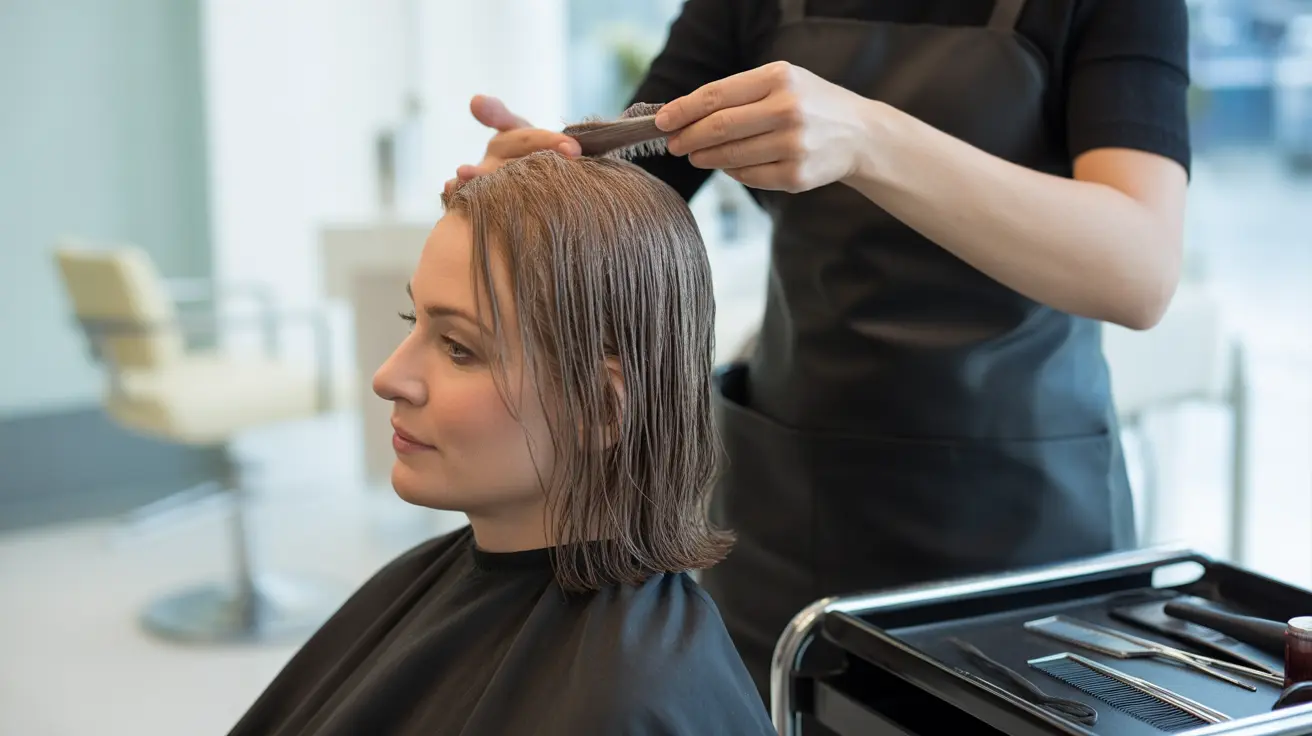If you're struggling with thin or fine hair, you may have heard about keratin treatments as a potential solution. These professional hair treatments have gained popularity for their ability to improve hair texture and manageability. But before you book your appointment, it's essential to understand how keratin treatments specifically work for thin hair, including their benefits, risks, and maintenance requirements.
In this comprehensive guide, we'll explore everything you need to know about keratin treatments for thin hair, helping you make an informed decision about whether this treatment is right for your hair type.
Understanding Keratin Treatments and Their Effect on Thin Hair
Keratin treatments are professional smoothing procedures that coat hair strands with keratin protein, which is naturally present in our hair structure. For those with thin hair, these treatments can temporarily add volume and improve the overall appearance of hair strands by filling in damaged areas and creating a protective layer around each hair shaft.
Benefits of Keratin Treatment for Thin Hair
When properly applied, keratin treatments can offer several advantages for those with thin hair:
- Increased hair thickness and body
- Reduced frizz and improved manageability
- Enhanced shine and smoothness
- Decreased styling time
- Protection against environmental damage
However, it's crucial to note that results can vary depending on your natural hair texture and the specific treatment used.
Safety Considerations for Fine and Thin Hair
While keratin treatments can be beneficial, they require careful consideration, especially for those with thin or fine hair:
Chemical Components and Their Impact
Traditional keratin treatments often contain formaldehyde or formaldehyde-releasing compounds. For thin hair, which can be more vulnerable to chemical processes, it's essential to choose formulations specifically designed for fine hair types.
Heat Exposure Concerns
The application process involves high-heat styling tools, which can potentially damage thin hair if not performed correctly. Working with an experienced stylist who understands the specific needs of fine hair is crucial.
Minimizing Health Risks During Treatment
To ensure the safest possible keratin treatment experience:
- Choose formaldehyde-free alternatives when available
- Ensure proper ventilation during the treatment
- Work with certified professionals who specialize in thin hair
- Discuss any scalp sensitivities or concerns beforehand
- Request a patch test before full application
Maintenance and Aftercare for Thin Hair
Proper maintenance is essential for maximizing the benefits of your keratin treatment:
- Wait 48-72 hours before washing hair
- Use sulfate-free shampoo and conditioner
- Avoid excessive heat styling
- Protect hair while swimming
- Schedule regular touch-ups every 3-4 months
Frequently Asked Questions
What are the benefits of keratin treatment for thin or thinning hair?
Keratin treatments can add volume, reduce frizz, and improve manageability in thin hair. They create a protective coating around each strand, making hair appear fuller and healthier while reducing styling time.
Is keratin treatment safe for fine, straight, thin hair?
Yes, keratin treatments can be safe for fine, straight, thin hair when performed by qualified professionals using appropriate formulations. However, it's essential to choose treatments specifically designed for fine hair to avoid overwhelming the strands.
Can keratin treatments cause hair loss or damage in thin hair?
While rare, improper application or excessive heat can potentially damage thin hair. Working with an experienced stylist and choosing the right formula can minimize these risks. Any unusual hair loss should be reported to a healthcare provider.
How can I reduce the health risks of formaldehyde in keratin treatments?
Choose formaldehyde-free alternatives, ensure proper ventilation during treatment, work with certified professionals, and consider requesting a patch test. Some salons offer "clean" keratin treatments specifically formulated without harsh chemicals.
How long does a keratin treatment last on thin hair and how should I care for it?
Keratin treatments typically last 3-4 months on thin hair. Maintain results by using sulfate-free products, avoiding frequent washing in the first few days, and following proper aftercare instructions from your stylist. Regular touch-ups can help maintain the desired effect.




